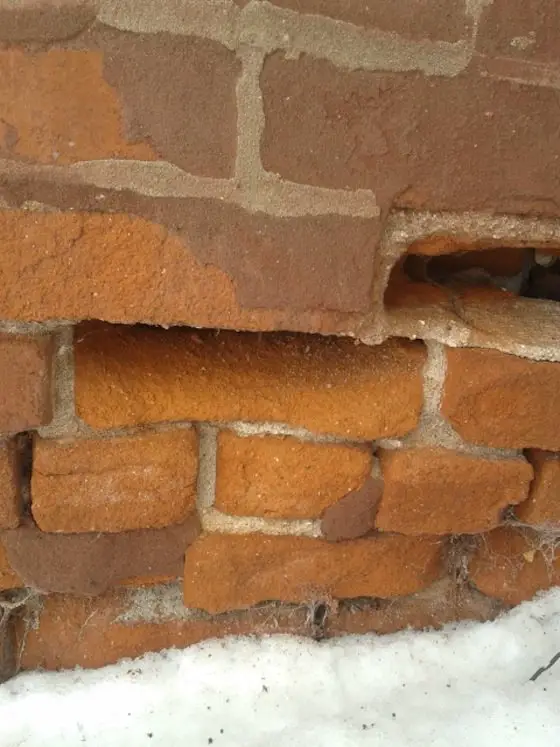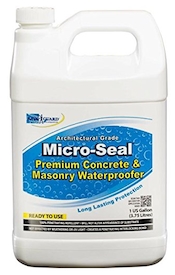Brick Erosion
Carl King is thinking of buying an historic building in Baltimore, MD that has some brick erosion. Here's what he sent me:
"I went to look at a building for sale in a historic district and found a problem with the brick I've never seen before. I wanted to know what you though the cause might be.
I'm wondering if a leaking roof allowed water to seep down into the walls and the freezing water caused the bricks to "explode" leaving them look the way you see here, or if they just used a substandard brick when they built the building.
Note in my photo the mortar has held up better than the brick. The picture shows the problem close to the foundation but there are sections of the wall near the top that are affected as well."

You can see the brick erosion. Guess what the cause is? Photo credit: Carl King
Here are my answers for Carl:
Carl, you nailed the cause. It's all water. What's surprising is that you don't get that much freezing weather in Baltimore, but it's enough to cause the issue.
The brick in this building was not fired as long as modern brick. The kilns used to fire brick 150, 200 or 250 years ago were simplistic and the heat in them was not even.
Believe it or not, builders back then wanted soft brick like this that absorbed water. They used the softer brick on the inner wythes of brick so they'd act like sponges to absorb wind-driven rain. This way the rain would not ruin the plaster that was applied to the inner wythe of brick in these old majestic buildings.
Realize that all the old brick buildings in Baltimore are no less than two bricks thick and some of the exterior walls are three bricks thick!
The builders provided harder brick and the masons used those to face the outside walls exposed to the weather.
When clay is fired in a kiln it undergoes a chemical reaction. The clay minerals reconstitute and form new minerals that are harder and have a much higher molecular bonding strength that resists water penetration and the forces of expanding water.
If you use the right clay and fire it long and hot enough you can create brick that are nearly as strong as granite cobblestones. Proof of this, if you want to travel, is in downtown Athens, OH where the city streets have paving brick that's been exposed for over 100 years and many look in excellent condition.
The brick that have eroded at this building you're looking at didn't undergo that chemical transformation. Water soaks into them, expands when it freezes and then the brick crumbles.
The good news is that you can replace the brick with ones that are close in color and texture. Be sure to read all my columns about how to match the mortar texture and color. Be sure you use just hydrated lime in the new mortar. Do NOT use newer mortars that contain Portland cement. READ my past columns about hydrated lime mortar.
opens in a new window I'd also do whatever is necessary to stop water from splashing onto the brick at the ground and ensure water doesn't flow over the upper brick where you have issues.
I'd also do whatever is necessary to stop water from splashing onto the brick at the ground and ensure water doesn't flow over the upper brick where you have issues.
You should also consider applying a clear silane / siloxane water repellent that's breathable. This will help stop water from getting into the brick in the first place. opens in a new windowCLICK HERE to get a great silane / siloxane water repellent for brick.
One Response to Brick Erosion